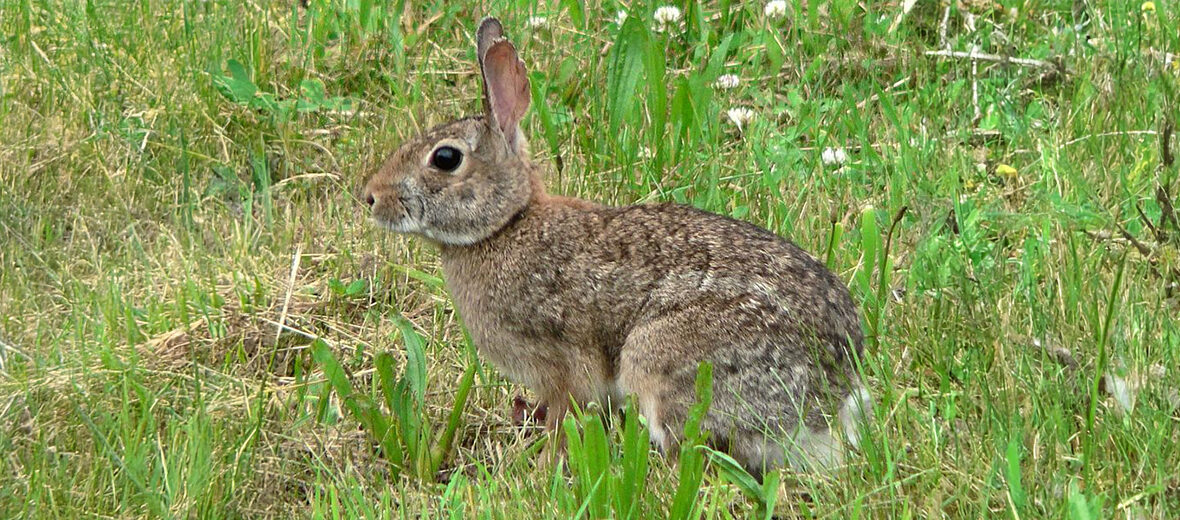
The eastern cottontail is the most commonly found species of rabbit in North America. These lagomorphs can be found in Canada, United States, Mexico, Central America, and northern South America. They prefer open grassy areas, clearings, and old fields with abundant green grasses, herbs, & nearby shrubs or hedges for cover. These rabbits face the threats of habitat loss and destruction at the hands of residential and commercial developments; hunting; trapping; and invasive species, that can result in predation and disease. However, they are quite abundant throughout their ranges and thus listed as Least Concern by the IUCN. Their population trend is unknown.
First the Stats…
Scientific name: Sylvilagus floridanus
Weight: Up to 2.5 lbs.
Length: Up to 15 inches
Lifespan: Up to 3+ years
Now on to the Facts!
1.) Sans their extent ranges, these cottontails were also introduced to France and Italy in the 1950s and 1960s.
2.) They don’t dig their own burrows but rather use burrows dug by other animals such as woodchucks.
3.) Nests are built in grasslands, orchards, scrubby woods, and thickets, then lined with grass and fur.
4.) These cottontails are crepuscular (active at dawn and dusk) and can also be nocturnal (active at night).
5.) Eastern cottontails are active year round and do not hibernate.
But wait, there’s more on the eastern cottontail!
6.) They can reach sexual maturity as early as 2 months of age.
7.) Temperature, rather than availability of food is the primary driver in breeding behavior.
Did you know…?
When pursued they typically hop in a zigzag pattern, and can hop as fast as 18 mph.
8.) Females undergo up to a 35 day gestation (pregnancy) that yields up to 12 kittens, up to 7 times a year!
9.) Bark, branches, buds, flowers, fruit, grass seeds, leaves, rush seeds, sedge fruits, twigs, and the occasional arthropod are all on the menu.
10.) Like all lagomorphs, eastern cottontails are coprophagous (eat their own feces “poop”), producing 2 types of pellets, a greener pellet that is later re-consumed, and a darker brown/black pellet that is discarded.
But wait, there’s more on the eastern cottontail!
11.) Mortality is high with these rabbits. 43% is by predation, 19% due to research, tularemia (rabbit fever) results in 18% of deaths, and vehicle strike (being hit by vehicles) is the final major cause of death.
12.) Cats, dogs, coyotes, bobcats, weasels, raccoons, minks, great horned owls, barred owls, hawks, ravens, crows, golden eagles, badgers, skunks, opossums, northern goshawks, black bears, and snakes all prey on these rabbits.
13.) These bunnies are often hosts to a variety of parasites such as fleas, lice, ticks, cestodes, nematodes, trematodes, gray flesh fly larvae, botfly larvae, tularemia, shopes fibroma, torticollis, and cutaneous streptothricosis.
Now a Short Eastern Cottontail Video!
Be sure to share & comment below! Also, check out the Critter Science YouTube channel. Videos added regularly!
Want to suggest a critter for me to write about? Let me know here.
Some source material acquired from: Wikipedia & IUCN
Photo credit: Walter Siegmund




